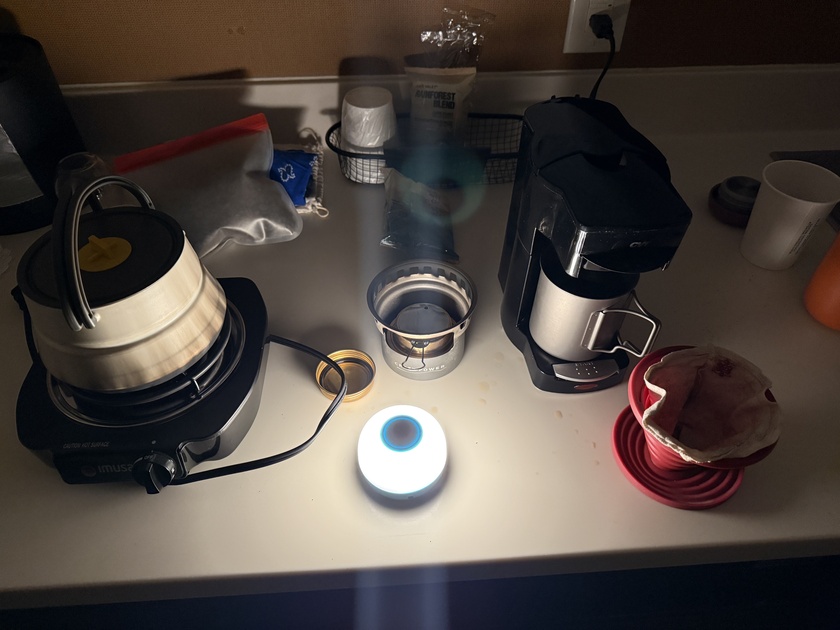
I’m on the road this weekend, visiting some of my old stompin’ grounds in Philadelphia and doing some other things. (So no livestream is possible today!) But I have some things I’m eager to share with you all when I get back home, involving the difficulties of having self-sufficient heat-up/cook methods while staying in higher-end hotels. It is very, very difficult because you can absolutely not create smoke.
I’m in a Marriot here in Philly, and there are probably 300 people or more staying in this hotel. The last thing on earth I can do is risk setting off the fire alarm in this building early in the morning. Can you imagine the resulting chaos that would ensue?
Instead of drinking the hotel’s terrible coffee, I want to be able to boil my own water for my own coffee that I have brought, enough water to have a cup now and to also brew plenty for my thermos for drinking throughout the day after I check out.
In preparation for this, I even brought a small, portable electric stove top that just plugs into the wall. As a backup, I have a small alcohol/pop can stove. I’ve been able to use neither one this morning. I’ve tried, and both are just too risky.
When I get home I’ll do a demonstration for everybody highlighting the problems I encountered with both things, and the ultimate solutions I arrived at.

















